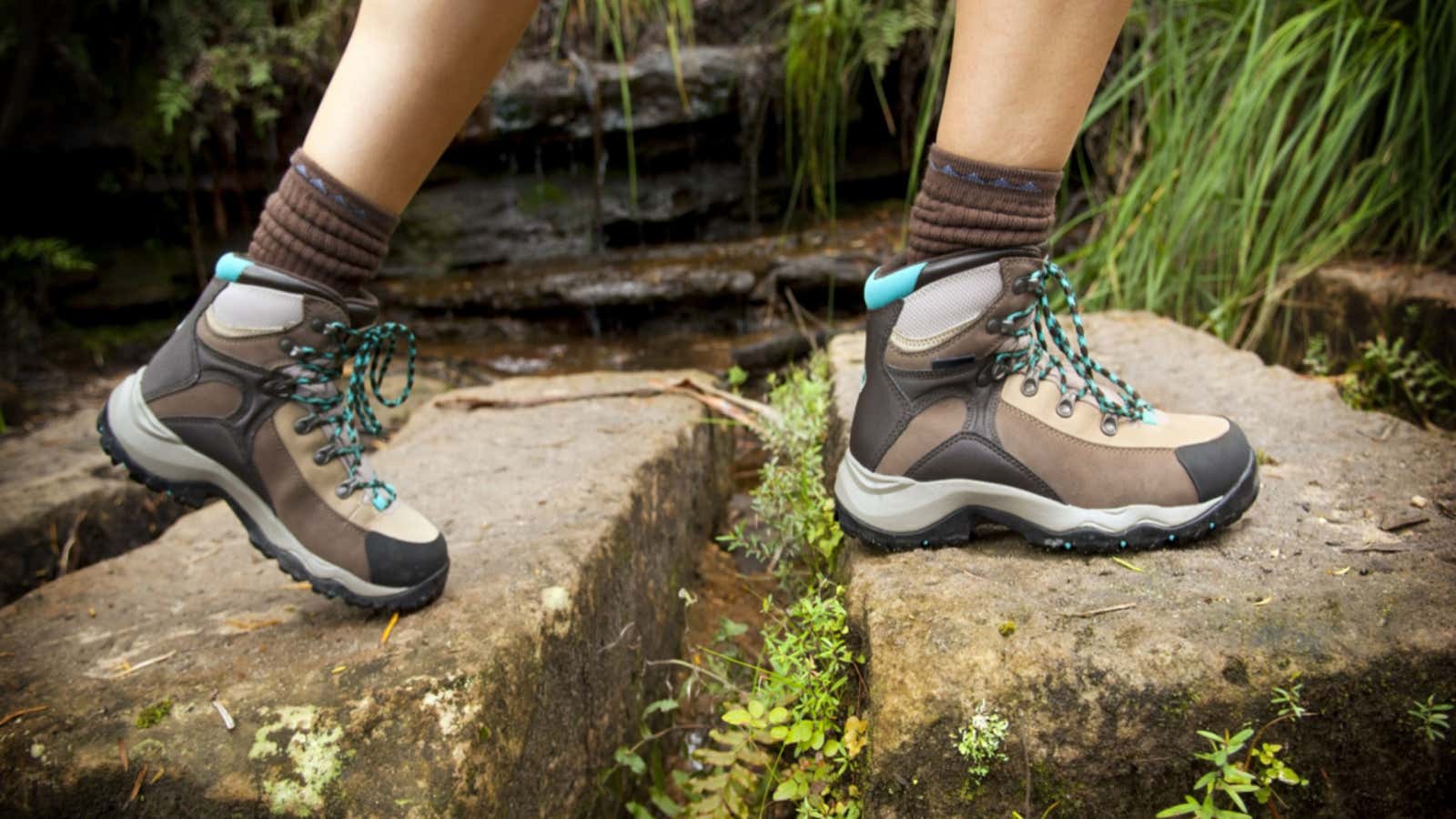Treat Your Shoes With Permethrin This Summer

If you hate the idea of being bitten by a tick this summer (the chances are high, to be honest), now is the time to get yourself a permethrin spray. Treating shoes with permethrin is one of the easiest ways to create a barrier between hungry mites and your tasty, blood-filled flesh.
Ticks need to spend time in mud or leaf litter to avoid drying out, so they hang close to the ground. They find us by climbing on a stalk of grass and stretching out their little legs as we pass by. (They do the same with deer, rabbits, and other creatures they find tasty.) As soon as they find a warm body, they crawl up.
What this means for you: If you want to avoid tick bites, the most important places to protect yourself are around the knees. You probably only have one or two pairs of shoes that you normally wear in tall grass (hiking boots, sneakers, maybe work boots), so putting a durable layer of permethrin on your shoes will go a long way in protecting you. summer.
You can enhance this protection by applying permethrin to socks, trousers, and other clothing and gear, such as tents and backpacks, if you are hiking. Mosquito repellent spray for skin (containing an effective active ingredient such as DEET) is a separate article, but it is also a good protection. Bonus: Permethrin and DEET also protect against mosquitoes.
What is permethrin and how does it work?
Permethrin is an insecticide that was originally derived from the chrysanthemum flower, but the stuff you can buy today is the synthetic version. It is safe for people and pets , unless you somehow manage to swallow, inhale, or absorb large amounts of it . Please note that permethrin spray is intended to be applied to clothing and objects, not to the skin. This can irritate the skin and our skin can break down the chemicals in the repellant, rendering it useless.
But permethrin is great for shoes and clothes. When in contact with it, even for a very short time, the ticks have difficulty walking and moving around and probably cannot bite. Laboratory tests show that mites, which are usually good climbers, tend to fall off permethrin-treated clothing. Similarly, mosquitoes can be killed or incapacitated by permethrin on clothing.
Permethrin should not be your only defense against ticks (or mosquitoes); A repellant spray on your skin is an important second layer of protection. But it’s a huge help, especially for those moments when you’re just going out into the backyard, or when you forget about bug spray until you’re deep in the woods.
How to Apply Permethrin to Shoes, Clothing, and Camping Gear
One of the most convenient properties of permethrin is that it can stick to clothes for months despite multiple washes. You can also buy clothes already treated with permethrin; just check camping equipment suppliers.
But you can also do it yourself. Buy a vial of permethrin spray that contains 0.5% permethrin. It is an EPA registered pesticide and comes with detailed instructions on the label.
Basically, you need to go outside (or to a well-ventilated area) and lay out your clothes on a flat surface. For shoes, remove the laces and open the shoes as much as possible. Then spray enough permethrin to make the fabric visibly damp and let it dry before wearing it. In addition to shoes and clothing, you can also process tents, backpacks, hats, and other items.
Pay attention to how long the protection will last. The label might say something like six weeks or six washes, whichever comes first. Don’t forget to reapply when the time is up.